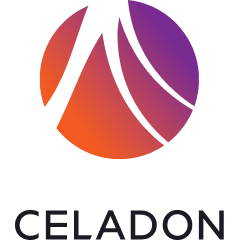Unlocking Success with MVP Development: A Comprehensive Guide

Introduction
In the ever-evolving landscape of software development, the Minimal Viable Product (MVP) strategy stands out as a guiding beacon, seamlessly weaving innovation and user-centricity to ensure triumphant project outcomes. As businesses strive for agility and adaptability in the digital age, understanding the essence and dynamics of MVP development becomes imperative.
The Essence of MVP Philosophy
At the core of MVP development is the strategic imperative to expedite the delivery of a functional product, minimizing the temporal gap between ideation and market entry. By concentrating on core features, MVP not only reduces initial costs but also responds swiftly to the dynamic demands of the target audience. This approach, aligned with early testing, ensures that subsequent iterations are finely tuned to meet real-world user needs and preferences.
Fueling Rapid Innovation
The deliberate release of a simplified product version within the MVP framework provides a paramount advantage. It allows developers to gauge user responses, preferences, and pain points, initiating a dynamic feedback loop. This loop not only informs strategic decisions but also cultivates a culture of adaptability and continuous improvement, fostering an environment conducive to rapid innovation.
Championing a Customer-Centric Ethos
At the heart of MVP development lies a resolute commitment to a customer-centric ethos. Involving users from the project's inception is not just a practice; it's a strategic imperative. This proactive engagement ensures that developers glean invaluable insights, uncover pain points, and iteratively refine the product based on actual user needs. It transforms the development process from a unilateral creation into a collaborative journey where developers and users coalesce in shaping the final product.
Flexibility as a Cornerstone
Flexibility is not just an attribute; it's a cornerstone within MVP development. In a rapidly evolving landscape, the ability to adapt becomes paramount. Armed with an MVP mindset, developers can pivot seamlessly, aligning the product with changing requirements, emerging trends, and evolving user needs. This inherent flexibility positions the product as not merely a static creation but as a dynamic entity, poised for continuous improvement and adaptation.
Advantages of MVP Development
Beyond its philosophical underpinnings, MVP development offers tangible advantages. It minimizes time-to-market, enabling businesses to seize opportunities swiftly. The cost-effectiveness of MVP development is evident in reduced initial investment and the ability to allocate resources judiciously based on real-time user feedback. The iterative nature of MVP development ensures that the end product is not just a reflection of initial expectations but a refined solution that resonates with end-users.
Conclusion
In conclusion, MVP development transcends being a mere strategy; it evolves into a mastery of creating adaptable and successful software products. By strategically prioritizing core features, fostering rapid iterations, and actively incorporating user feedback, developers cultivate a product that not only meets user expectations but sets the stage for perpetual refinement and innovation.
Embracing the MVP Mindset
As businesses embark on their next development journey, embracing the MVP mindset becomes a strategic imperative. Consider the profound impact MVP principles could have on your project. Deliberate focus on core features, rapid iteration cycles, and continuous user engagement shape the trajectory and success of your software product in the ever-evolving digital landscape. It's not just a methodology; it's a dynamic, iterative journey towards software excellence, unlocking the full potential of MVP development.
Leatn more: https://celadonsoft.com/mvp-development
Note: IndiBlogHub features both user-submitted and editorial content. We do not verify third-party contributions. Read our Disclaimer and Privacy Policyfor details.





